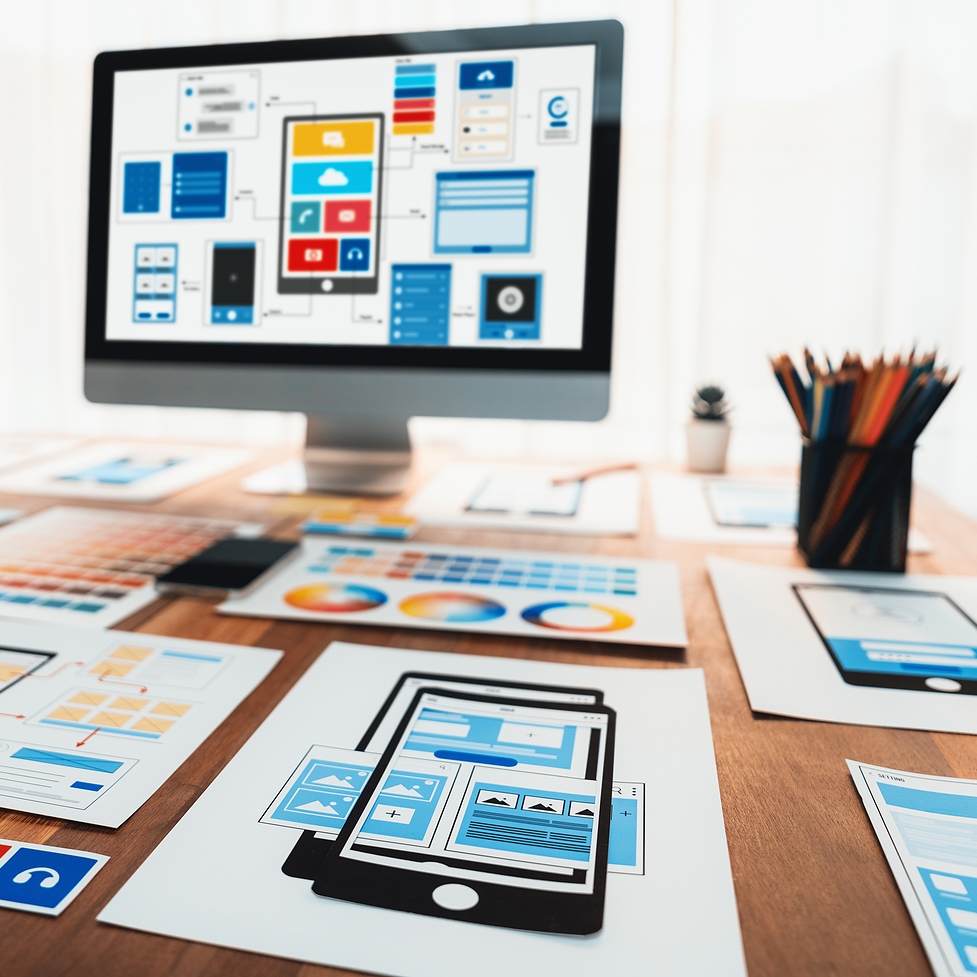User experience (UX) design holds a crucial role in shaping how users interact with technology. Creating intuitive user interfaces is key to captivating audiences and ensuring seamless interactions. If you're aspiring to kickstart your career in this field, exploring job opportunities as a junior UX designer is a great way to gain practical experience while contributing your creative ideas to real-world projects.
At the heart of this process lies the contribution of junior UX designers, whose fresh perspectives and creative prowess are instrumental in crafting exceptional experiences. This article is a must-read for every junior UX designer.
In it, we dive into the essence of artistic expression in UX design and how it empowers junior designers to create interfaces that resonate with users. Keep reading!
How Do You Make Intuitive UX Design?
If you look through job descriptions of UX UI designers on job boards like Jooble, for example, one of the most standout requirements is being able to make intuitive UX design. For beginners, this term can be confusing. It doesn't have to be, though.
To create intuitive UX designs, it's essential to understand the users' mental model and align the interface with their expectations. Junior UX designers can achieve this by conducting thorough user research, gathering valuable insights, and applying them throughout the design process.
Usability testing plays a pivotal role in refining the interface, as it allows designers to gather real-world feedback and make necessary adjustments. Simplicity is key—by keeping interfaces clean and uncluttered, users can quickly navigate and achieve their goals. Furthermore, adhering to consistent design patterns enhances the overall user experience.
What Should Junior UX UI Designers Know?
For junior UX UI designers to excel in their craft, they must possess a blend of technical skills and creative acumen. Proficiency in design tools, such as Adobe XD and Sketch, is vital for turning ideas into tangible prototypes.
A solid grasp of user-centered design principles ensures that the interface prioritizes users' needs and preferences. Collaboration and communication skills are equally crucial, as designers often work in cross-functional teams where effective communication fosters a shared vision. Additionally, staying updated with the latest design trends and industry advancements ensures that junior designers remain at the forefront of innovation.
What Are the 7 Pillars of UX Design?
The seven pillars of UX design form the bedrock of exceptional user experiences. These principles guide designers in creating interfaces that captivate and engage users effectively. Here are the 7 pillars of UX design:
- Useful: The interface should serve a clear purpose, solving users' problems or fulfilling their needs.
- Desirable: Aesthetics play a significant role in attracting users and keeping them engaged. Strive for visually appealing and emotionally resonant designs.
- Accessible: Ensuring that the interface is accessible to all users, regardless of their abilities or limitations, is essential for inclusivity.
- Credible: Users must trust the interface, which can be achieved through transparent communication and reliable content.
- Findable: Intuitive navigation and well-organized information make it easy for users to find what they seek.
- Usable: The interface should be effortless to navigate, with clear calls-to-action and minimal friction.
- Valuable: Delivering value to users through content, services, or products fosters a positive user experience and encourages loyalty.
What Are the 4 Core Processes of Designing UX?
Designing exceptional UX also follows a systematic approach. This approach involves four core processes that include:
- User Research: This phase entails gathering insights into the target audience, their preferences, pain points, and behaviors. Techniques like surveys, interviews, and user testing are employed to inform the design process.
- Design: During this phase, designers ideate, sketch, and create wireframes and prototypes based on user research findings. Iterative design cycles help refine the interface until it aligns perfectly with users' expectations.
- Testing: Usability testing allows designers to evaluate the interface's performance, identify potential issues, and gather user feedback. Adjustments are made to address any shortcomings.
- Implementation: Once the design is finalized, it is handed over to developers for implementation. Collaboration between designers and developers is crucial to ensure the intended design is faithfully translated into a functional interface.
In Closing
The power of artistic expression in crafting intuitive user interfaces cannot be underestimated. Junior UX designers play a pivotal role in this endeavor, bringing fresh perspectives and creative flair to the table. Emphasizing creativity and empowering junior designers will undoubtedly lead to a future where UX design continually evolves to meet users' evolving needs, preferences, and expectations.

